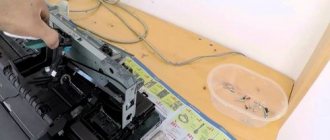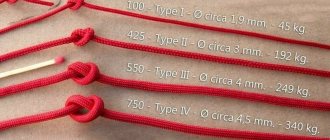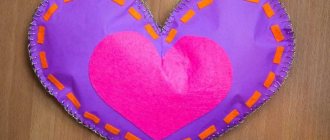The accuracy of processing parts on metal-cutting equipment is monitored using optoelectronic sensors of an optical ruler installed on the machine bed. The analog signal from the sensor is sent to a digital display device (DRO), converted to digital and visualized in the form of numerical values for the movement of a tool or part along the feed axes.
The design of the optical ruler is quite simple, but reliable, providing high accuracy (up to fractions of microns) of measurements. Its main elements are: a transparent ruler with microscopic shading applied and an optical reading head moving along the ruler. As the reader moves, it reacts to a series of marks and gaps; the analog signal is transmitted via cable to the digital display device. The DRO converts the number of passed lines into digital information and displays it on its display. The ruler has from one to several reference points for setting the origin of the movement (zero coordinates).
Optical meters (rulers) are widely used both in new equipment and when re-equipping and modernizing old machine tools. The economic effect of using linear optical sensors is directly related to increased metalworking productivity and simplified operator work.
All digital display devices (DROs) on sale from can be viewed at the link - /katalog-stankov/tokarnye/misc/.
Basic parameters of the optical line
- Working length.
- Accuracy.
- Signal type.
- Measurement discreteness.
| Optical ruler KA600 |
Working length
The length of the optical ruler must be greater than the nominal stroke of the machine. It is not the magnitude of the stroke that should be taken into account, but the distance between the rigid stops along the measured axis. This will prevent failure of the reading sensor (head) due to the fault of the operator or in case of malfunction of the equipment limit switches. The recommended working length of the electronic digital ruler is based on the maximum amount of movement along the axis +100 mm
The longer the measured length, the larger the cross-section and size of the reading head. It is necessary to ensure minimal deformation of the measuring glass installed inside the housing. The opposite statement is also true - the smaller the measured axis stroke, the smaller the optical ruler and reading head can be
Accuracy
You should not purchase a ruler based on its high accuracy class (fractions of microns). The higher the measurement resolution, the higher the price of the meter. An optical ruler will not increase the accuracy of the machine; this technical characteristic depends on the rated accuracy and the actual state of the mechanics and backlash of the supporting surfaces. External factors are also important: the level of vibration during equipment operation, temperature, etc. Without eliminating all negative conditions, without modernization and compliance with the rules of normal operation of machines, it is impossible to achieve even the passport parameters. And a precision measuring system in the form of a high-precision optical ruler will not help in this case.
Electronic rulers for woodworking machines
In small sawmills that use non-through type sawmills, there are many manual operations that can be easily automated using an electronic unit called an Electronic Ruler (or Industrial Machine Controller KPS, Linear Motion Controller KLP, etc.).
On machines (sawmills), when one board is sawed off in one pass of the sawing mechanism, it is necessary to accurately position the saw at the beginning of each cut. To do this, it is necessary to calculate the thickness of the board being cut, taking into account the thickness of the cut.
The electronic ruler is designed to automate technological operations to control the mechanism for raising and lowering the saw when sawing on horizontal band and circular sawmills, and angle saws.
At the end of each cut, the band saw is raised in order to retract it to the beginning of the next cut.
Using an Electronic Ruler, you can increase the productivity of the machine and the cutting accuracy by at least 20%, and also eliminate human calculation errors.
What to choose: magnetic or optical ruler
With the required high accuracy (up to 2-3 microns for every meter of movement), optoelectronic meters (rulers) are used on metal-cutting equipment of almost any type. Focusing on financial benefits, equipment is often equipped with magnetic rulers that have lower measurement accuracy. But the price of a magnetic meter begins to outperform the cost of an optical ruler only for models with a working length of half a meter or more.
Magnetic rulers:
- Used primarily on grinding and boring machines; it is economically feasible to use when measuring lengths from 3 m
- Not used on machines with an error of less than 10 µm/m. In this case, turning, milling, grinding and other types of metal-cutting equipment are equipped with optical sensors.
| Magnetic ruler KA800M |
KA-800 is a series of rulers with magnetic tape. It is used on machines with moving units of more than 3 meters. The SDS6 display system can simultaneously work with both optical and magnetic rulers
Optical rulers
The KA series of optical lines from Guangzhou Lokshun CNC Equipment ltd takes into account almost all requests from both manufacturers of metal-cutting equipment and end consumers. The series is characterized by high measurement resolution (a signal is transmitted every 1 or 5 µm of movement depending on the resolution of the ruler), which minimizes positional error. Optical rulers are equipped with housings that protect working surfaces from metal shavings, sludge, and coolant.
- KA-200 - linear displacement sensors, have a small overall cross-section (16x16 mm), are installed in narrow places, and are used for specific measurements.
- KA-300 is an optical ruler with a working length of 70-1020 mm, characterized by a simple and rational design and sufficient rigidity. The most popular product.
- KA-500 is a special ruler with an optical head for movements from 70 to 470 mm. It is compact and can be installed in confined spaces.
- KA-600 - despite the considerable length of the meter, it is characterized by sufficient rigidity, achieved by installing additional supports and clamps in any accessible places along the length of the ruler. Thanks to this, with a working length of 1000 to 3000 mm, it has significant vibration resistance.
Why is the DRO installed? Is it really necessary?
For modern turning equipment, accuracy parameters and work quality are the most important among other indicators. Full use of turning operations is possible on universal, milling and boring machines; this condition is achieved by equipping machine tools with DROs and raster optical rulers. Additional equipment for these components is required and necessary if the following goals are pursued:
- Requires display of accurate values and calculations;
- it is necessary to control the position of the tool in relation to the axes (relative to the “workpiece zero”);
- it is required to move the tool according to the set values, bypassing intermediate transmission and mechanical gears, which differ
- natural wear and play, which will lead to errors in work.
It is advisable to install the DRO on the following types of machines:
- turning;
- milling;
- boring;
- grinding.
Equipping a lathe or miller with new measuring devices allows the operator to work with increased accuracy and a reduced likelihood of making mistakes. All DROs have a display that displays the data received from the sensors, understandable, clear and in an accessible form. To manually process the obtained data, it is enough to have simple mathematical calculations.
REFERENCE. The best effect of turning operations is achieved when installing the DRO on universal machines. Such equipment will be cheaper than a full-fledged CNC complex, which will make it possible to take advantage of all the advantages that modern digital technologies provide.
Making an inductive sensor
A cross-shaped reamer of the box is cut out of the press, four holes are pierced in its bottom, into which flexible stranded wires for the coil terminals are threaded, the ends of the coils are soldered to them, the reamer is bent to form a box, wrapped with adhesive tape or electrical tape, another plastic pin is threaded through (plastic after the hole for fastening is removed and a hole for fastening is obtained), the pin with the coils is also centered and fastened and, finally, filled with epoxy. The coils are soldered into place with flexible leads, each in its place, phased to obtain generation, the sensor is attached to its place, next to it is the generator board.
Nowadays, such coils or similar ones can be found in many no longer needed, broken or outdated devices, for example in floppy drives. There are ready-made coils and sensors, but they can’t always be purchased, and it’s not always cheap. Well, doing it yourself is also a pleasure for someone, especially if it works no worse, and in some cases better than finished products.
Schemes of homemade oscilloscopes on microcircuits
First, let's analyze a simple circuit of an oscilloscope based on microns, which is assembled with only 3 transistors. To set up an amplifier or any other amateur radio device in which the circuit contains electrical oscillations, an oscilloscope is very convenient, with which you can observe the signal shape. Here is a description of an oscilloscope created from three transistors, two diodes and a cathode ray tube. The circuit diagram of an oscilloscope on a microscope is shown in image No. 1:
It’s not difficult to make amateur oscilloscopes, the circuits are quite understandable. Oscillo consists of a vertical beam deflection amplifier on transistor VT1, a scanning generator on transistor VT2 and a horizon amplifier. deviations on VT3. To eliminate distortion, the amplifier unit on VT1 is covered by negative feedback (through P4 and P6). From the reinforced type collector VT1, voltage is supplied through capacitor C2 to one of the beam vertical deflection plates.
The sweep generator unit on VT2 operates in avalanche mode. The frequency range of the master oscillator sweep device is divided into 4 subranges. Resistor P13 is needed to smoothly change the frequency within the sub-range. Synchronization of the frequency of the generator set is carried out by the frequency of the signal being studied, the voltage of which is supplied through C3 and P9 to the base circuit VT2, the synchronization level is controlled by resistor P11. From the output of the multiplier, the sawtooth voltage is transmitted through C11, P18 to the base of VT3, and from its collector through C12 to the horizon plate. beam deflection.
When the amplitude of the sawtooth voltage at the amplifier output is 70V, the length of the horizon. The line on the tube display is 50 mm. The brightness and focusing of the beam are regulated by variable resistor devices P23, P24, and the movement of the beam vertically and horizontally by resistor devices P10 and P15. Due to the low sensitivity of the oscilloscope, it should be supplemented with an amplifier, the circuit of which is shown in image No. 2:
The amplifier can be located either inside the housing or separately from it. When assembling the structure, the power transformer must be placed so that the axis of its coil is a continuation of the longitudinal axis of the tube. Also, the tube will need to be enclosed in a magnetic shield.
Milling ruler
The author shares the secrets of making a table and ruler for a milling machine. With the adjustable pads of a homemade ruler, it is easy to rout straight and at right angles. Its design also includes a pipe for connecting a sawdust extraction system.
HOMEMADE MILLING MACHINE TABLE
Until recently, we could not buy a milling machine that would be convenient for performing various jobs. And although over time, manufacturers have saturated the market with excellent milling machines, there is still, to this day, a reason to discuss the construction or improvement of an old machine, and with your own hands. A homemade milling machine will cost less than a new one and, in addition, you can customize it to suit the use in your workshop.
But all the benefits of your improvement can be realized only with high-quality manufacturing of an albeit not very complex, but effective device. Therefore, you need to pay special attention to every detail.
The determining parameter for the quality of a milling machine as a tool is the accuracy of its working table. Ideally, the table should have a flat top, stable and massive. Therefore, the tabletop must be made from two glued sheets of 20-mm plywood. But there is a nuance here. If the sheets are warped, then there will be troubles when milling not only long, but also medium-length parts.
Table irregularities will raise or lower the part as it passes through the cutter area, resulting in an incorrectly milled profile.
When choosing plywood for your router table, select the flattest sheet you can find and lay it so that the bulge, if there is one, “looks” up. A somewhat convex surface of the table, ensuring full and constant contact of the cutter with the length being processed, is more acceptable than a table that has a downward deflection in the area of the cutter.
MILLING RULER
If the table for your router is successful, then you can think about improvements. For example, the work requires a special ruler that allows you to accurately position the workpiece relative to the cutter. This ruler can also be used on a factory-made machine.
Milling ruler
- This is a useful tool for a milling machine or circular saw. It’s easy to make it yourself by assembling several parts exactly cut from Karelian birch plywood. By changing the dimensions, you can adapt this ruler to any milling machine. Therefore, before starting to make a ruler, measure the distance from the front edge of the work table to the cutter on your machine.
Although the design of the ruler is quite simple, it will somewhat expand the capabilities of the machine and make working on it enjoyable. For novice carpenters, a groove cut into the rear end of the ruler base will be especially convenient, which allows you to quickly release the ruler mount, move it and install it closer or further from the cutter. The pin in the slot serves as a reference point for rotation and lateral movement of the ruler. Tightening the pin handle instantly secures the rear end of the ruler to the router table, and a quick clamp at the front end of the ruler locks it securely in position. What if you need to reduce your drinking a little? You only need to loosen the clamp (this is convenient to do if the clamp is located under your right hand), easily knock or push the ruler in the desired direction and tighten it again.
The ruler also has a dust collector box with a pipe attached to the back side of the ruler. The dust collector not only serves as a trap for sawdust during milling, but also serves as a rigidity element that holds the face of the ruler at an angle of 90° to the table. Although the sawdust storage unit is quite small, in combination with the exhaust system (you can also use a regular vacuum cleaner) it works very effectively.
Finally, the ruler has two separate adjustable pads that allow you to mill parts with high quality. The pads can be brought completely together or moved apart by 100 mm. This will allow you to install any cutter, and then adjust the pads so that they are at a distance of about 3 mm from the surface being processed. This ensures clean and precise milling passes with minimal chipping of the material and improves the selection of sawdust by the suction system. There is a triangular plane on the front pad that serves as a clamping handle and at the same time a good protective guard.
MANUFACTURING A RULER
All parts of the line are made from 6-mm Russian-made Karelian birch plywood. It is sold in sheets of 1500×1500 mm. To make a ruler, start by cutting out (according to the dimensions appropriate for your machine) the ruler itself and its base. Then, from the bottom side of the ruler and the front side of the base, cut out a semicircle with a radius of 50 mm. The centers of both semicircular cutouts should be located at a distance of 300 mm from the right end of each of these parts. At a distance of 85 mm from the left end of the base, cut out a 10×58 mm transverse groove for the pin securing the base of the ruler to the table.
On the ruler itself, at a distance of 38 mm from the bottom edge, cut four slits measuring 6x50 mm. Now you can glue and press the bottom end of the ruler from above to the plane of the base until the glue sets completely. The trick here is to make sure the ruler is connected exactly flush with the front end of the base. Reinforce the joint with a few finishing nails and check that the assembly is square along the entire length of the straight edge.
Then cut out the dust collector parts to size and make a 075 mm hole in the center of the back wall blank. Glue, nail and compress the dust collector housing assembly and allow the glue to set for at least a few hours. Then center the dust collector over the opening at the base of the ruler and attach it as described above, additionally screwing it to the ruler with two self-tapping screws.
Drill holes in the linings for the mounting bolts. Start by drilling 016mm recesses for the bolt heads. Drill these blind holes to a depth of 5 mm, and in the center of them drill 06 mm through holes for the bolt shanks. Drive a mounting bolt into each of them and, putting washers on them, screw in wing nuts. Attach the finished overlays with bolts to the ruler.
To install a ruler on the router table, position it so that the cutter is located exactly in the center of the opening in the ruler. Mark the position of the groove in the base of the ruler relative to the machine table. Using the mark, drill a hole in the table for the threaded rod. Cut the threaded rod to the required length, put two washers on it and screw on two wing nuts. Place the lower nut on the glue, and the upper one serves to tighten or loosen the ruler assembly on the machine table. Place a clamp at the other end of the ruler and you can start milling.
Electronic ruler ZRK 5.1
Manufacturer of electronic rulers ZRK 5.1 - IP Rudenets A.N., Dzerzhinsk, Belarus
External view of the housing of the ZRK 5.1 electronic unit
The electronic ruler (KP Positioning Controller) ZRK 5.1 is designed to automate the sawing process on horizontal band and circular sawmills, and angle saws.
ZRK 5.1 positioning controller can be used for sawmills of various designs
Using this unique device, you can increase the productivity and accuracy of sawing by at least 20%, eliminating human calculation errors.
When installing an electronic ruler on a band or disk sawmill of various designs, no changes to the electrical circuit of the sawmill are required, which means that any electrician can connect, repair and maintain the machine.
Basic operations of the ZRK 5.1 controller when sawing:
- setting the saw to a given height;
- setting the thickness of the cut with an accuracy of 0.1 mm;
- setting the thickness of the board taking into account the size of the cut;
- visual constant control of the distance from “0” or “table” to the band saw;
- remembering the coordinates of the last cut;
Technical characteristics of the electronic line ZRK 5.1
- Supply voltage __ 160…..250 VAC
- Starter coil voltage __ 24….380 VAC
- Operating temperature range __ -20….+50°С.
- Housing protection degree __ IP 54
- Power consumption __ 8 W
- Weight (with power supply) __ 540 g
- Overall dimensions (LxWxH), mm __ 170 x 85 x 40
- Dimensioning accuracy __ ±0.3…..±0.9 mm
Manufacturer of electronic rulers ZRK 5.1
- Individual entrepreneur Rudenets Andrey Nikolaevich
- Address: Republic of Belarus, Minsk region, Dzerzhinsk, st. Sharko, 4
- Website: www.linejka.com, https://linejka.fis.ru, E-mail: [email protected]
- Phone: +375 (29) 3641352, +7 (909) 6572013
Electronic ruler EL-4, EL-6
Manufacturer of the electronic line EL-6 - Avis, LLC, address: Voronezh
Features of the EL-6 electronic line
Appearance of the housing of the EL-4 electronic unit
An electronic ruler can increase the productivity and quality of sawing by quickly and accurately setting the saw to a given coordinate, as well as eliminating calculation errors made by the operator.
- setting the thickness of the board, taking into account the thickness of the cut;
- coordinate control;
- remembering the coordinates of the last cut;
- execution of the “saw beam rollback” command;
- compensation for beam movement errors.
- Registered at 394033, Voronezh, Leninsky Prospekt, 160, Nezhil. POM. I IN LIT. I/IA ON THE GROUND FLOOR OFFICE 119
- Assigned TIN 3661057918, KPP 366101001, OGRN 1123668048965, OKPO 10600899
- The main activity of the company is the production of instruments and equipment for automatic regulation or control
- Director Dorovskikh Sergey Viktorovich
- Valid from 10/12/2012
- https://etalonmash.rf
Avis, LLC
DIY digital oscilloscope
In order to make an oscilloscope with your own hands, you need to prepare:
- KIT-set or constructor.
- Soldering iron, metal alloy, flux.
- Wire cutters.
- Soldering tool - third hand.
- Tester.
- Flat-type screwdriver.
- Smartphone with 3.5 mm plug.
All of the above is required to make a homemade oscilloscope.
Description of manufacturing procedure:
Stage one. First, parsing the KIT set. Here we have a board for printing, which is made on scarlet PCB with a microscopic processor already soldered on it. The kit also includes a color screen that sits on the printing board; it will be mounted on top of the main board using special connectors, which are also included in the kit.
In order to prevent errors during assembly, there is an English-language instruction, it shows the ratings of all components, their location, for greater convenience there are places to check the part that you have already installed, which greatly simplifies the work, and the settings are also described at the end whale The set contains high-quality probes with a connector. Since the kit contains SMD elements, in this case you will need a soldering iron with a thin tip. Now let’s move on directly to assembling a 20 MHz oscilloscope with our own hands, the diagram will help with this.
Stage two. The first thing we will install on the board are SMD components, in this case these are resistors, their resistance is written on the packaging. The denominations themselves are marked on their body with a numerical code. Arrange the components according to the markings in the instructions and immediately apply flux to the soldering area, and then solder with a soldering iron with a thin tip. Place an SMD transistor with 3 pins on the board. Then solder the microscopic circuit, aligning the key on the body in the shape of a dot with the key on the board. We're done with the SMD parts, now we can move on to the DIP components.
Stage three. Using the same principle, we install the remaining DIP resistors, that is, those that are inserted into the holes on the board. You can find out their resistance using several methods, using a multimeter, color marking, and also in an online calculator, where you just need to enter the color of the stripes from the case.
After installation, solder the resistors and secure the board in the “third hand” device. Then you need to remove the remaining leads using side cutters. Be careful when working, as you can accidentally remove a track from the board.
Stage four. The resistors are installed, now start soldering non-polar capacitors, the marking of which is indicated by a number, for example, the capacitor with No. 104 on the case has a rating that is equal to 10 * 10 to the 4th power, which means its capacity = 100,000 picofarads = 0.1 µF, place them on the board according to the instructions. Next, insert polar type capacitors. On their coating, the negative contact is indicated by a snow-white stripe, and the long leg is considered a plus. On the board itself the plus is signed in the same way; we check the denominations according to the instructions.
Stage five. Lay out the inductors on the board; there is no need to determine their ratings, since they are all identical. Install them according to the rules, and then solder them on the back side of the board. Then insert the transistors, their number is both on the case cover and on the board, there is a pattern on it that repeats the shape of the case, according to which you need to place them. Then solder the transistor leads to the contacts. The kit should also contain two diodes; they must be installed according to the markings on the case.
Stage six. For indication, solder a green LED, the long leg is a plus, the short leg is a minus, on the board itself there is a positive contact for mounting. Almost all the parts are already on the board, all that remains is to solder the connectors, keys and switches. After this, solder the contacts to the screen.
Stage seven. The board is completely ready, place it on the special plastic feet from the kit. Now you need to make a jumper at JP3. Before connecting the screen to the board, you need to check the assembled device; for this you will need a multimeter. We connect the 9 volt power supply to the device and, in voltage measurement mode, set the negative probe of the multimeter to the contact on the board labeled GND, and the positive probe to the 3.3 volt contact, which is located just above the SMD transistor, the multimeter should have this voltage, i.e. 3.3 V. After this check, turn off the power and make a jumper in the JP4 zone, and only then install the display module.
Electronic rulers for band and disc sawmills. Video.
- Amalitsky V.V. Woodworking machines and tools, 2002
- Afanasyev A.F. Wood carving, Technique, Tools, Products, 2014
- Bobikov P.D. DIY furniture, 2004
- Borisov I.B. Wood processing, 1999
- Jackson A., Day D. Woodworking Bible, 2015
- Golden Book of woodworking for the owner of a country plot, 2015
- Ilyaev M.D. Wood carving, Master's lessons, 2015
- Komarov G.A. Four-sided longitudinal milling machines for wood processing, 1983
- Kondratyev Yu.N., Pitukhin A.V... Technology of wood products, Product design and calculation of materials, 2014
- Korotkov V. I. Woodworking machines, 2007
- Lyavdanskaya O.A., Lyubchich V.A., Bastaeva G.T. Basics of woodworking, 2011
- Lyubchenko V.I. Thicknessing machines for wood processing, 1983
- Manzhos F.M. Wood cutting machines, 1974
- Rasev A.I., Kosarin A.A. Hydrothermal processing and preserving of wood, textbook, 2010
- Ryzhenko V.I. The Complete Encyclopedia of Wood Art, 2010
- Rykunin S.N., Kandalina L.N. Woodworking technology, 2005
- Simonov M.N., Torgovnikov G.I. Debarkers, 1990
- Soloviev A.A., Korotkov V.I. Setting up woodworking equipment, 1987
- Sukhanov V.G. Circular saws for sawing wood, 1984
- Fokin S.V., Shportko O.N. Woodworking, Technologies and equipment, 2017
- Hilton Bill Woodworking, The Complete Guide to Stylish Home Furniture Making, 2017
Bibliography:
Related Links. Additional Information
- Directory of woodworking machines
- Directory of manufacturers of woodworking machines and equipment
- Directory of manufacturers of household woodworking machines
- Directory of chipper manufacturers
- Classification of woodworking machines
- Machines for longitudinal cutting of lumber
- Sawmill frames. Classification
Home About the company News Articles Price list Contacts Reference information Interesting video Manufacturers










